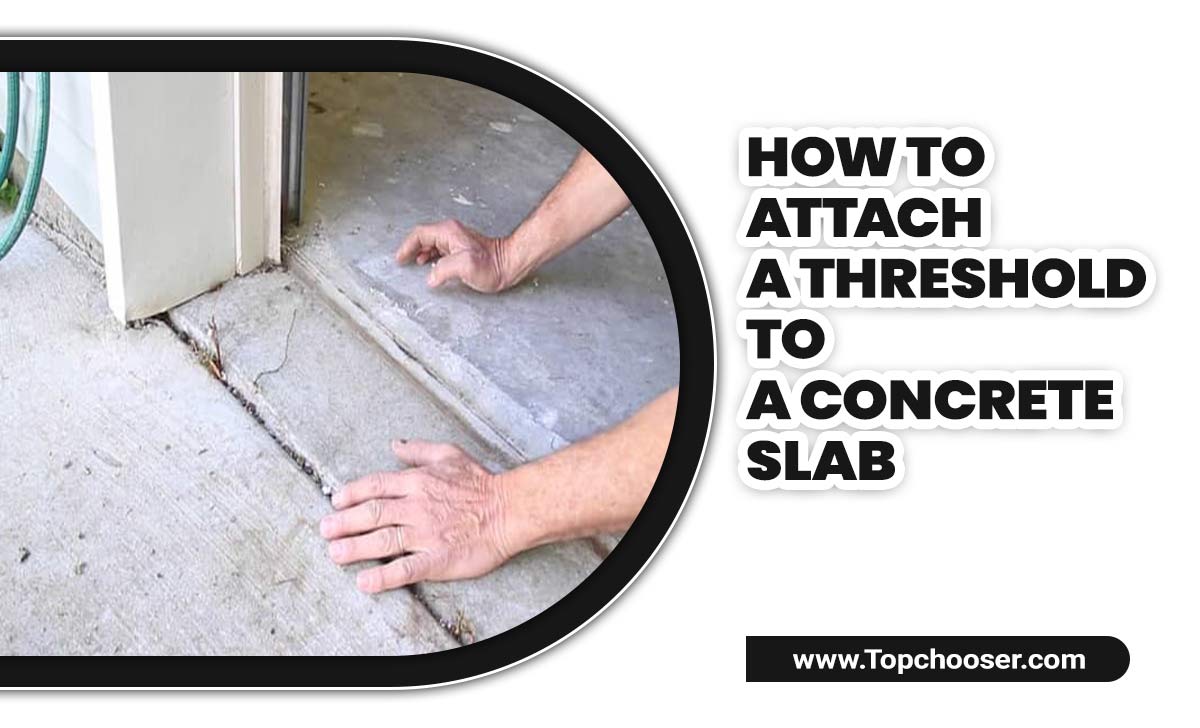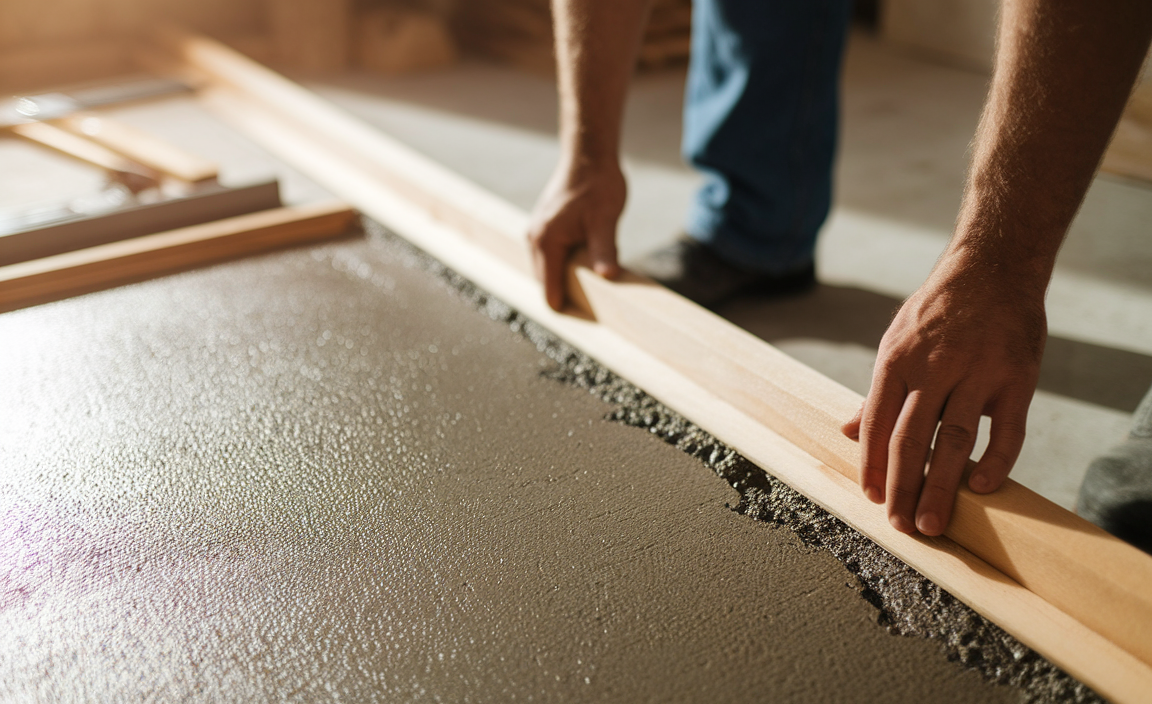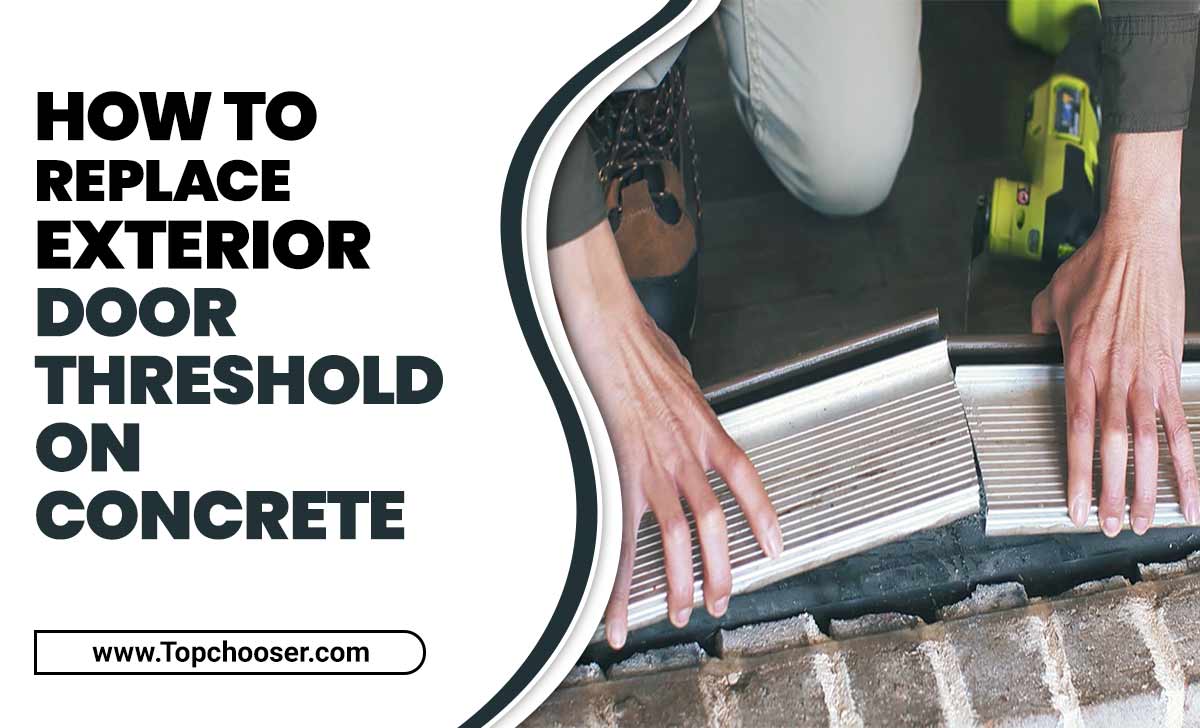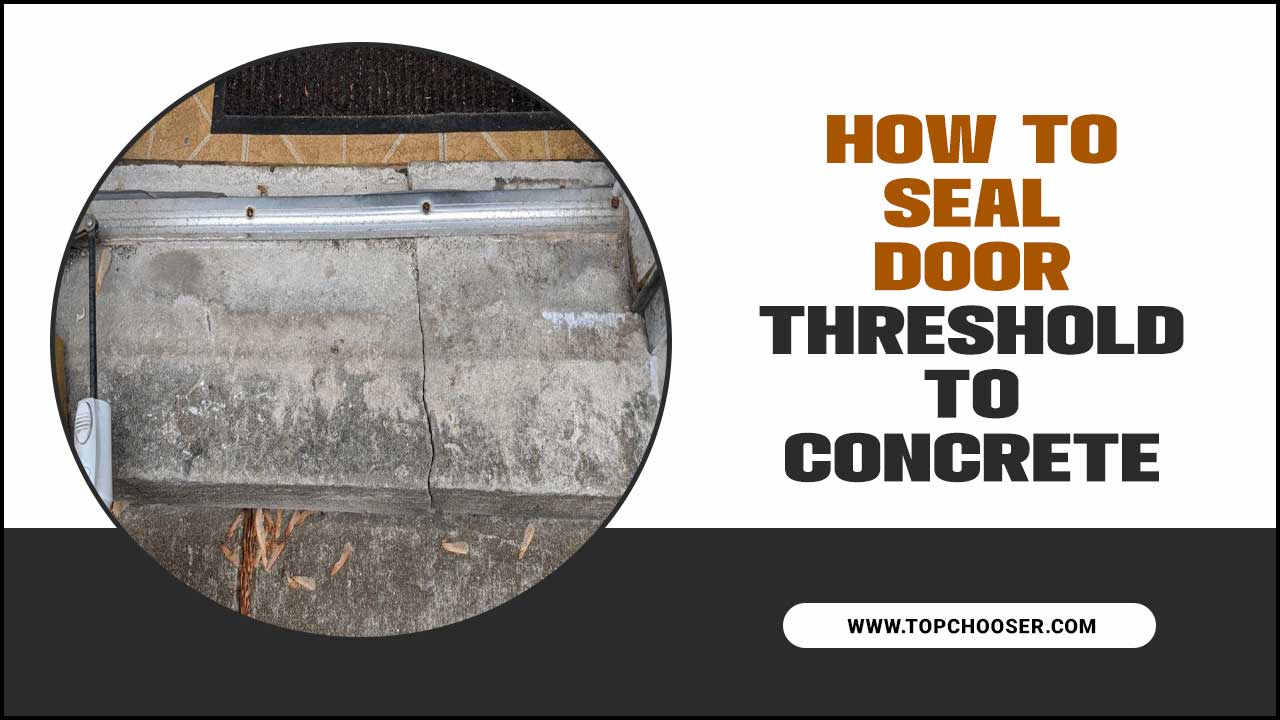Thresholds play a crucial role in the overall functionality and aesthetic appeal of a building. These small but significant components are a transition point between two different areas, providing a smooth and safe passage for foot traffic and preventing potential tripping hazards.
Proper installation ensures durability and effectiveness when attaching a wood threshold to a concrete slab. Improper installation can lead to various issues, including water seepage, uneven surfaces, and potential structural damage.
It is important to attach a threshold to a concrete slab properly. We will delve into the various factors that come into play, how to attach a threshold to a concrete slab, and provide a step-by-step guide on how to do so effectively.
From the necessary tools and materials to the best techniques, it aims to equip readers with the knowledge and skills to successfully attach a threshold to a concrete slab.

Why Use A Threshold On A Concrete Slab?
Using a threshold on a concrete slab can provide several benefits. Firstly, it helps to create a smooth transition between different flooring materials. For example, if you have a concrete slab in one room and carpet in another, a threshold can help to bridge the gap and prevent tripping hazards.
Also, thresholds can help contain water or moisture within certain areas, such as bathrooms or kitchens. This can help to protect the underlying concrete slab from damage and prolong its lifespan. Finally, thresholds can also add a decorative element to your space, allowing you to personalize and enhance the overall aesthetic of your home or business.
Types Of Thresholds For Concrete Slabs
Several types of thresholds can be used for concrete slabs. Each threshold type has advantages and considerations, so choosing one suitable for your specific needs and application is important. Here are some common options:
- Saddle Thresholds
- Aluminium Thresholds
- Rubber Thresholds
- Marble Thresholds
- ADA Compliant Thresholds
5 Steps On How To Attach A Threshold To A Concrete Slab

When attaching a threshold to a concrete slab, there are five important ways to ensure a secure and durable installation. Properly attaching a threshold to a concrete slab is crucial for a secure and durable connection.
Choosing the right attachment method based on the threshold material and slab is essential. Using appropriate tools and materials ensures a smooth installation process. Here, scroll down to detail 5 steps to attach a threshold to a concrete slab.
1.Gather The Necessary Tools And Materials
Gather all the necessary tools and materials to attach a threshold to a concrete slab. These may include a drill, screws, a hammer, a level, a threshold, and appropriate anchors. Ensure the concrete slab is clean and dry before beginning the attachment process.
Position the threshold in the desired location on the slab and use a level to ensure it is straight. Proceed by drilling pilot holes for the screws and then fasten the threshold securely using the screws and anchors.
2.Prepare The Concrete Slab And Threshold For Installation
To attach a threshold to a concrete slab, you must first prepare both surfaces for installation. Start by ensuring the concrete slab is clean, level, and free of debris or obstructions that could affect the threshold’s placement.
Next, position the threshold on the slab’s desired location, ensuring it fits securely and aligns properly with the doorway. Once you have confirmed the placement, secure the threshold to the concrete slab using appropriate adhesive or fasteners, following the manufacturer’s instructions for the best results.
3.Apply Adhesive Or Mortar To Secure The Threshold In Place
To attach a threshold to a concrete slab, apply adhesive or mortar to the underside to secure it in place. Ensure that the adhesive or mortar is evenly spread to provide a strong bond between the threshold and the concrete surface.
Press the threshold firmly into position, ensuring it is level and aligned correctly. Allow the adhesive or mortar to dry completely before subjecting the threshold to weight or pressure to ensure a secure and long-lasting attachment.
4.Use Screws Or Anchors To Reinforce The Attachment
To attach a threshold to a concrete slab, begin by securing it with screws or anchors to reinforce the attachment. Start by drilling holes into the concrete slab, ensuring they are the correct size for the screws or anchors. Place the threshold in position and align it properly before inserting the screws or anchors.
Tighten them securely to ensure the threshold is firmly attached to the slab. This method will provide a durable and stable connection, ensuring the threshold remains in place for an extended period.
5.Allow Time For The Adhesive Or Mortar To Dry Before Using The Threshold
Once you have attached the threshold to the concrete slab using adhesive or mortar, it is important to allow sufficient time for it to dry before putting any weight or pressure on it. This drying period can vary depending on the specific adhesive or mortar you are using, so be sure to refer to the manufacturer’s instructions for guidance.
Rushing this step could compromise the effectiveness and durability of the threshold installation. Allow ample drying time to ensure that the threshold is securely and permanently attached to the concrete slab.
Securing The Threshold For Long-Term Durability

When attaching a threshold to a concrete slab, it is important to ensure it is securely fastened for long-term durability. The bead of caulk will help seal the gap between the threshold and the concrete slab. Liquid Nails is a strong adhesive that can securely attach a threshold to a concrete slab. Here are some steps to follow:
- Prepare The Concrete Surface: Clean the area where the threshold will be attached, removing debris or loose particles. Use a wire brush or scraper to create a rough surface for better adhesion.
- Apply Adhesive: Apply a strong adhesive specifically designed for bonding metal or wood to concrete.
- Position The Threshold: Carefully place it in the desired position, ensuring it is level and flush with the surrounding floor.
- Secure With Screws Or Anchors: Depending on the type of threshold and its design, use screws or concrete anchors to secure it in place. Make sure to choose screws or anchors that are appropriate for outdoor use and withstand weather conditions.
- Stability Test: Once the threshold is secured, apply pressure and check for movement. Make adjustments or add additional screws/anchors for added stability if necessary.
By following these steps, you can ensure that your aluminum threshold is securely attached to the concrete slab, providing long-lasting durability for years.
Maintenance Tips
When attaching a wooden threshold to a concrete slab, following these tips ensures that your attached threshold remains secure, functional, and aesthetically pleasing for years. Marble thresholds add elegance and sophistication to any entryway when securing a metal threshold onto a concrete slab. There are a few finishing touches and maintenance tips to keep in mind:
- Ensure the threshold is properly aligned before securing it to the concrete. Use a level to ensure it is straight and flush with the floor.
- Use appropriate fasteners for attaching the threshold to the concrete. Concrete screws or anchors can provide a secure hold.
- Consider using a waterproof sealant around the edges of the threshold to prevent water damage and maintain its longevity.
- Regularly inspect and clean the threshold to remove any debris or dirt accumulating over time.
- Depending on the location and amount of foot traffic, you may need to replace or repair the threshold periodically to ensure its functionality.
Conclusion
To ensure the longevity and stability of your threshold, it is crucial to properly attach it to the concrete slab. By following the steps outlined, you can achieve a secure attachment that will withstand the test of time. From preparing the concrete slab to choosing the right threshold and attachment method, each step plays a vital role in ensuring the proper alignment and levelling of the threshold.
Additionally, securing the threshold for long-term durability and implementing finishing touches will contribute to its overall strength and functionality. Following these guidelines, you can confidently attach a threshold to a concrete slab and enjoy the benefits of a secure and reliable entrance. We hope you understand how to attach a threshold to a concrete slab.
Frequently Asked Questions
What Glue Will Stick Concrete To Concrete?
A construction adhesive specifically designed for concrete surfaces is recommended to bond concrete to concrete effectively. Products like Loctite PL Premium Polyurethane Construction Adhesive or Gorilla Construction Adhesive are popular choices for this purpose.
What Is The Best Adhesive For The Threshold To Concrete?
A polyurethane-based construction adhesive is the best for attaching a threshold to concrete. These adhesives are strong, durable, and weather-resistant, making them ideal for securing thresholds in place on concrete surfaces.
What Is The Threshold For Flooring?
A threshold for flooring is a transition piece that connects two different types of flooring or rooms, typically used to provide a smooth and seamless transition between them.
Where Do You Put A Threshold?
A threshold is typically placed at the entrance of a doorway or transition point to mark the boundary between two areas, such as rooms with different flooring types.
What Is Mounting Adhesive?
The mounting adhesive securely attaches an object, such as a photo or artwork, onto a backing material like a foam board or mat board. It provides a strong bond and is easy to apply and remove if needed.

I am passionate about home engineering. I specialize in designing, installing, and maintaining heating, ventilation, and air conditioning systems. My goal is to help people stay comfortable in their homes all year long.





